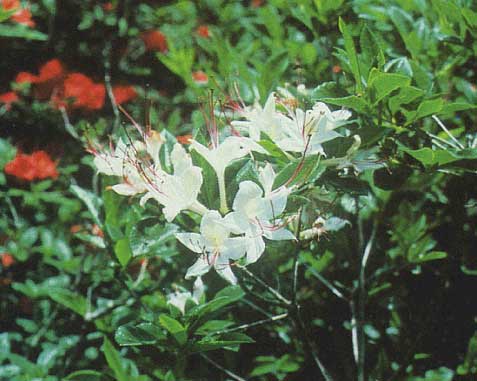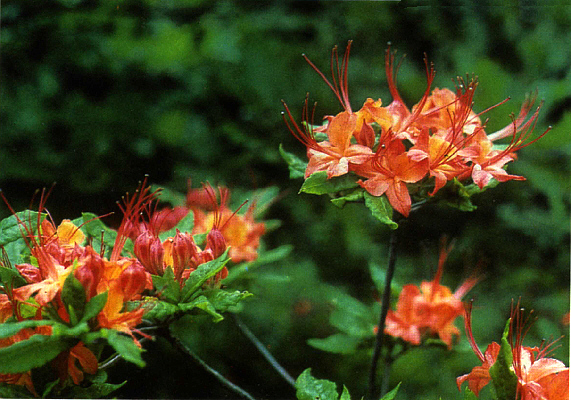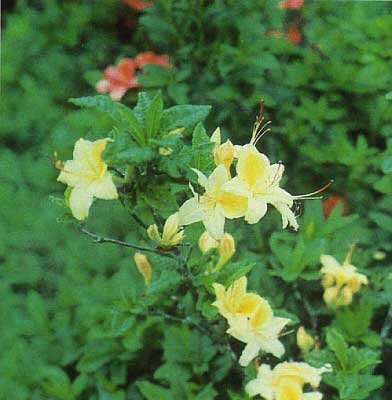Native Azaleas: Gregory Bald
H. Furman Cantrell, Piedmont, S. C.

|
Native Azaleas: Gregory Bald
Photo by H. Furman Cantrell
|
|
|
|

|
Native Azaleas: Gregory Bald
Photo by H. Furman Cantrell
|
|
|
|

|
Native Azaleas: Gregory Bald
Photo by H. Furman Cantrell
|
|
A very unique, natural collection of native deciduous azaleas is located atop Gregory Bald in the Great Smokies near the Tennessee-North Carolina border. The site can be reached by hiking trails (4½ or 7 miles one way, depending upon the trail) which originate near Cades Cove. The trails are not easy, and the degree of difficulty is determined by the hiker's conditioning. The hike is often accented by sightings of wildlife as you pass near springs or along ridges. The native flora provides enjoyment and opportunities to stop for brief rests while observing wildflowers or ferns. Nevertheless, for those who hike to the top of the mountain during the flowering period, the reward is generous. One finds hundreds of azaleas ranging from 1 or 2 to 12 or 15 feet tall scattered over the bald area. Trails wind among the plants amid the undercover of grass and native blueberries. Two or three hours are needed to see all of the plants, thus the trip requires most of a day.
The color range is very spectacular and includes white to yellow to gold to orange and pink to red. Many intergrades of color are present along with bi-colors, resulting in perhaps a hundred distinct flower colors. The colors are complemented by variations in flower form, size and shape. Although the flowering season spans a few weeks, a visit around June 20-25 usually provides a magnificent display of color and a unique opportunity for photographers to capture the beauty on film. The area is protected and removal of plants is prohibited.
The source of this natural wonder is thought to be the results of hybrids of
R. bakeri
and
R. arborescens
. It is possible to locate specimens which closely resemble both species, but the majority of the plants are hybrids. There are several outstanding yellow/gold forms and several white forms with variations of stamens as well as size and shape of flower. The pink forms range from uniformly colored pinks of varying shades and forms to some very delightful bi-colors with a yellow blotch. There is an abundance of orange-flowering forms of great diversity in flower size and shape. It takes time to absorb all of these variations and colors, but the time is well spent. When you leave you have difficulty deciding which is your favorite. The red-flowering plants are very striking and can be seen for great distances. Their variation is as wide as the others. Many people believe that they locate true
R. bakeri
among the reds.
This collection of native azaleas is truly one of significance because of the number of plants involved, the great variation in color and form and the fact that it is so well protected to prevent destruction. A number of people from the area visit the site each year to enjoy this natural wonder. Usually, an organized trip is planned by some members of the Southeastern Chapter-ARS, and persons wishing to join this group should contact the author or other members of the chapter for details. Some of our members collect seed from these plants in the fall and submit them to the Seed Exchange. Persons unable to visit the site may be able to grow plants from seed collected there and enjoy the beauty in that manner. Whatever your approach, it is a magnificent fete of nature and should be enjoyed to the fullest.


